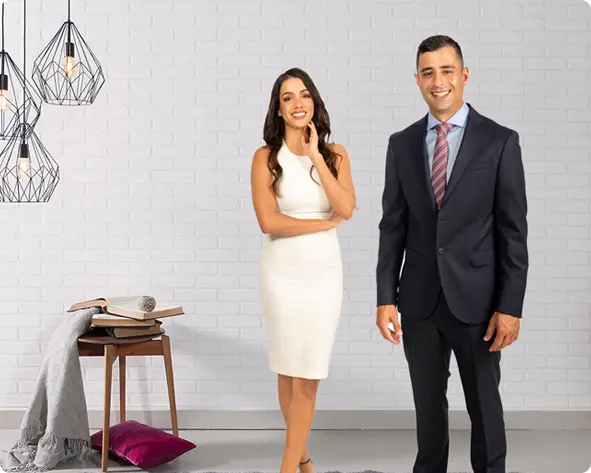Buying a house is one of the most significant financial decisions you’ll ever make. You may wonder how much house you can afford with a $100k salary comfortably. While the exact answer varies based on individual circumstances, there are general guidelines that can help you determine an approximate budget.
1. The 28/36 Rule:
The 28/36 rule is a widely recognized guideline used in the finance and home lending industries to determine how much debt an individual can comfortably take on, especially when considering a mortgage. The rule helps both lenders and borrowers assess affordability and avoid overextending. Here’s how it breaks down:
28% (Front-end ratio): The first number, 28, stands for the recommended maximum percentage of a borrower’s gross monthly income that should go towards housing expenses. This typically includes:
- Mortgage payments (both principal and interest)
- Property taxes
- Homeowner’s Insurance
- Any homeowner’s association (HOA) fees
For example, if your gross annual income is $100,000, then you shouldn’t spend more than $28,000 a year (or $2,333/mo) on the above-mentioned housing expenses according to the 28% rule.
36% (Back-end ratio): The second number, 36, represents the suggested maximum percentage of a borrower’s gross monthly income that should be allocated to all debt obligations combined. This encompasses:
- All housing expenses (as mentioned above)
- Credit card payments
- Car loans
- Student loans
- Personal loans
- Any other outstanding debt
Using the same example with a gross annual income of $100,000, your total monthly debt payments shouldn’t exceed $36,000 a year (or $3,000/mo) based on the 36% rule.
28/36 Rule Calculator
2. Consider Your Down Payment:
A common benchmark for a down payment is 20% of the home’s purchase price. For example, if a house costs $300,000, a 20% down payment would be $60,000, and you’d finance the remaining $240,000.
Mortgage Insurance:
When you put down less than 20% on a home, lenders typically see it as a higher-risk loan. To mitigate this risk, they require the borrower to purchase mortgage insurance. There are two primary types:
- Private Mortgage Insurance (PMI): This is associated with conventional loans. The cost can vary based on the size of the down payment and the loan, but it’s typically around 0.3% to 1.5% of the original loan amount per year.
- Mortgage Insurance Premium (MIP): This is for FHA loans. There’s an upfront premium (often 1.75% of the base loan amount) and an annual premium (typically 0.45% to 1.05% of the base loan amount).
First-Time Home Buyers:
Many first-time homebuyers might find it challenging to save up a full 20% for a down payment. Recognizing this challenge, there are various programs and loan types designed to assist them:
- FHA Loans: Backed by the Federal Housing Administration, these loans often allow down payments as low as 3.5%.
- Conventional 97: Offered by Fannie Mae and Freddie Mac, these loans allow for a down payment of just 3%.
- VA Loans: For veterans and active-duty military, VA loans often require no down payment.
- State and Local Programs: Many states and local governments offer programs to help first-time buyers with down payments and closing costs.
3. Factor in Other Costs:
When determining affordability, don’t forget:
- Closing costs: Typically 2-5% of the purchase price for buyers.
- Maintenance and repairs: A good rule of thumb is to budget 1-3% of the home’s purchase price annually.
- Utilities: Can vary widely based on location and home size.
- Homeowner’s insurance: Costs vary based on location, home size, and coverage.
- Property taxes: Property taxes vary by location.
- Possible HOA fees: If your home is part of an HOA, you will have HOA fees due typically monthly or quarterly
4. Consider Loan Interest Rates:
Even a small change in interest rate can make a significant difference in monthly payments over the life of the loan. See the table below to get an idea of how much interest rates will impact your monthly payment, and thus the 28/36 rule.
|
Loan Amount |
4% |
5% |
6% |
7% |
|---|---|---|---|---|
|
$300,000 |
$1,432 |
$1,610 |
$1,799 |
$1,996 |
|
$500,000 |
$2,387 |
$2,684 |
$2,998 |
$3,327 |
|
$800,000 |
$3,819 |
$4,295 |
$4,796 |
$5,322 |
5. Personal Comfort and Other Financial Goals:
Remember that just because you qualify for a certain mortgage amount doesn’t mean you should max out your budget. Consider other financial goals, your lifestyle, and future financial needs.
6. Using Online Calculators and Speaking to Professionals:
There are numerous online calculators available that allow you to input your salary, debts, and other expenses to get an estimate of how much house you can afford. While they provide a good starting point, it’s also wise to speak with a financial planner or mortgage broker to get a clearer picture tailored to your personal situation.
Conclusion:
On a $100,000 salary, the 28/36 rule suggests you could afford a home where the monthly housing costs are up to $2,333. However, it’s essential to consider all factors like down payment, interest rates, and other financial goals. In the end, buying a home is not just about the numbers but also about your comfort and long-term financial health. Always consider both the present and the future when making this substantial decision.

